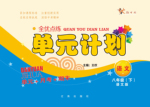题目内容
1根据短文内容及首字母提示, 补全空格内单词,请写出完整单词。
Amanda is an American filmmaker and actress. She came to China three years ago to study Performance at Beijing Film Academy. Last month, she m 1. to Japan to study Economics at the University of Tokyo. On June 10th, she r 2. to the USA. She chatted with her parents about the cultural d 3. between the two countries.
“The people in b 4. countries are very friendly to f 5. . But they have different cultures. For example, when I spoke Chinese in China, the people there always showed s 6. on their faces. But when I came to Japan, I found it was o 7. . Most local people there hoped I could talk with them in Japanese, t 8. I was not good at it,” she said.
Amanda thought this might have something to d 9. with the fact that the western group in Japan is o 10. than the one in China. They have stayed in Japan for a long time. And most of them speak Japanese well. But Westerners in China are still quite a new group. They’re usually treated as guests and tourists.
1.moved
2.returned
3.differences
4.both
5.foreigners
6.surprise
7.opposite
8.though
9.do
10.older
【解析】略

 全优点练单元计划系列答案
全优点练单元计划系列答案--- I bought the digital camera two months ago.
--- You mean that you __________ it for two months.
|
A.have had |
B.have been |
C.have bought |
D.have taken |
About ________ of the workers in the factory were born in the ___________.
|
A.two-thirds;1970 |
B.two-thirds;1970s |
|
C.two-third; 1970 |
D.two-third;1970s |
We all love our English teacher, He always makes his English class very ________.
|
A.interest |
B.interests |
C.interesting |
D.interested |